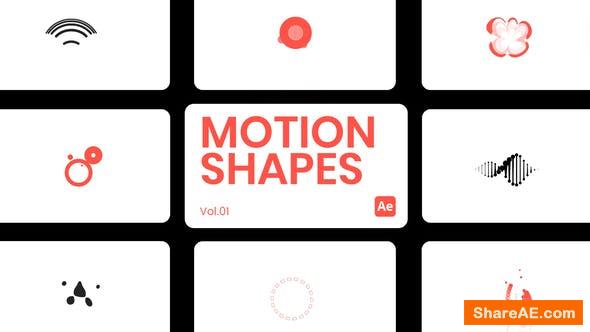Extraction 2, the highly anticipated sequel to the action-packed Netflix film featuring Chris Hemsworth, has been generating significant attention recently, and for good reason. The latest buzz revolves around an impressive extended shot, often referred to as a “oner,” which lasted approximately 22 minutes (or 21 minutes, depending on the source).

Here’s What You Can Learn From That 22-Minute Oner From Extraction 2
free ae templates free share ae downlaod free envato market free videohive free stock video free after effects templates

From directing to writing tips, there’s a lot to discover.
Extraction 2, the highly anticipated sequel to the action-packed Netflix film featuring Chris Hemsworth, has been generating significant attention recently, and for good reason. The latest buzz revolves around an impressive extended shot, often referred to as a “oner,” which lasted approximately 22 minutes (or 21 minutes, depending on the source).
However, it’s important to clarify that the sequence was not achieved in a single continuous take, despite initial reports. Instead, it involved a clever combination of various shots meticulously edited together to create a seamless and uninterrupted flow, reminiscent of the technique used in the film Birdman.
Preparing the Sequence
Achieving such a remarkable endeavor is an incredibly challenging task on its own. However, when you factor in elements like explosions, high-speed car chases, and intense gunfights, the complexity of the project becomes even more evident.
In an interview with Netflix: Behind the Streams, director Sam Hargrave revealed that months were dedicated to perfecting and meticulously assembling each component of the sequence. It involved a painstaking process of constructing the sequence shot by shot, ensuring every detail was precisely calibrated.
What adds an intriguing layer to this sequence is the active involvement of Hargrave himself as the camera operator. As seen in the aforementioned video, he can be identified wearing a white helmet while riding on the back of the ATV, actively capturing the action from the unique perspective.

Hargrave explained his decision to position himself in those challenging spots, stating, “Part of the reason that I put myself in those spots is because I’ve been in some tough spots before from my career with stunts, and there’s kind of an innate body awareness that you really only get having been in those kinds of situations.”
Despite the extensive preparation that spanned several months, it was inevitable that mistakes would occur. In the initial stages of the sequence, a planned stunt involved a car colliding with a stack of pipes and subsequently flipping over. However, due to an early activation of the stunt mechanism, the car flipped prematurely, landing on the pipes instead of executing the intended maneuver.

Hargrave found the end result to be surprisingly favorable compared to their original plan. Collaborating with the VFX team, they incorporated CGI elements to create the illusion that the car had intentionally crashed into an object, giving the moment a deliberate and impactful feel. Through this creative solution, they managed to enhance the sequence and make it appear as though the unexpected outcome was intentional.
This sequence highlights an important lesson: unforeseen incidents can occur during filming, but that doesn’t necessarily warrant a reshoot. In fact, spontaneous moments that arise from such unexpected situations can often contribute to a more compelling final product.
Rather than discarding the scene due to the unexpected outcome, the team embraced the opportunity to adapt and make the best of the situation. They recognized that the spontaneous nature of the moment brought a unique quality to the film, ultimately enhancing its overall impact. This serves as a reminder that sometimes the unplanned moments can yield remarkable results and add a layer of authenticity to the final production.
Coming Back to Set
Despite the extensive planning and execution of the sequence, the team recognized the need for additional moments of dialogue to enhance the storytelling. Upon reviewing the footage they had captured, they decided to revisit the set and shoot additional scenes.
“We actually came back and shot this a few different times just to add in a little more interaction, a little more dialogue between the characters,” shared Hemsworth in the interview. He emphasized the importance of providing context and grounding the intense action with character development. Regardless of how thrilling the action may be, it was crucial to continuously bring the focus back to the characters, their relationships, and the stakes involved. By incorporating these additional dialogue moments, the team aimed to enrich the viewer’s understanding of the narrative and enhance the overall impact of the sequence.

Here’s another important lesson we acquire:
No matter how flawlessly you depict a scene in your script, once it’s filmed and viewed on screen, you inevitably perceive it from a distinct perspective and uncover gaps in your story and plot.
In the process of crafting a film, it’s consistently beneficial to allow space for revisiting and capturing additional footage that can enhance the overall quality of your film.
Keeping Things the Same
Not only was the entire sequence filmed in a non-sequential order, but there were also significant time gaps of weeks or months between moments that were meant to occur mere seconds apart within the film.
According to Hargrave, there were instances in the filming of Extraction 2 where two seamless takes were shot months apart. He emphasized the importance of maintaining precise continuity in such cases, where even the smallest details like the actor’s hair and costume must remain consistent. Although you might assume this advice only applies to certain filmmakers, it’s surprising how much poor continuity can disrupt the audience’s immersion, even for casual filmmakers. Therefore, when assembling your scenes, regardless of their size, it is crucial to ensure consistent continuity between shots.
If your schedule and budget don’t allow for someone dedicated to closely monitoring these details, it is essential to plan your shots in a way that minimizes changes between takes, thereby preserving consistency.
But we want to know what you learned from this look behind the scenes. Let us know in the comments!
gfxdownload download videohive free free download vfx vfx download ae download share ae free essential graphics premiere pro flower titles aedownload audiojungle free download videohive prisma lens effects download premiere pro free templates













Leave a Comment